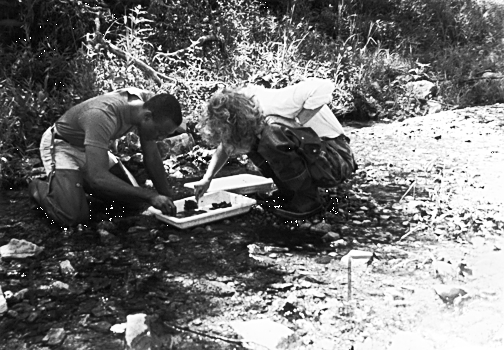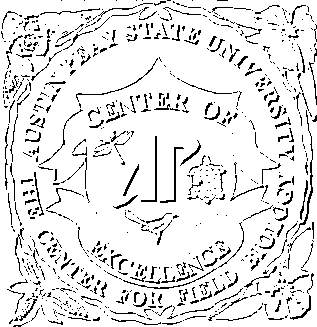Center for Field
Biology


|
Mission Statement
|
|
The Center for Field Biology's goal at its inception was the
establishment of a common
database of information about the faunistics and floristics of the
Tennessee Valley
Authority's Land Between the Lakes. However, after having been
designated as an
Accomplished Center, its focus has expanded to include problems in
experimental ecology
which identify the impacts of various disturbances upon the
composition of communities
within the Land Between the Lakes, Tennessee, and adjacent
eco-regions, as well
as experimental programs which contribute to the development of
general ecological
theory and applied biology. |
Goals and Objectives
|
|
- To establish a common database of information about the
faunistics and floristics of the Land Between the Lakes region.
- To identify the impacts of various disturbances upon
communities within the Land Between the Lakes.
- To provide a setting for undergraduate and graduate students to
obtain hands-on experience under the leadership of professionals in
the field.
- To engage area science teachers in summer research projects.
|
Introduction
|
| The Center for Field Biology at Austin
Peay State University (APSU) brings together scholars from various
biological disciplines to conduct research on biotic communities
within the Land Between the Lakes (LBL), Tennessee, and adjacent
eco-regions. These include inventories of community structure;
endangered, threatened and rare species; and the environment. The
center's primary focus is providing research opportunities for
undergraduate and graduate research assistants, principal
investigators from Austin Peay State University and faculty from
other institutions. |
Educational Scholarly
Activities
|
| Since its inception, the Center for
Field Biology has provided research experiences and financial
support for 35 undergraduate and graduate students annually. While
involved in externally funded research projects, students attain
cultural and educational enrichment as well as practical
experience.
Center-sponsored researchers have contributed to over 250 regional
and national publications, and international refereed journals.
They have also made over 200 presentations to professional and
scientific societies. These activities and levels of scholarship
have contributed immeasurably to the professional image of APSU's
biology faculty and students and toward achievement of the center's
primary mission. |
Professional Symposia
|
| The Center for Field Biology has also
sponsored five symposia entitled The Natural History of Lower
Tennessee and Cumberland River Valleys. These ongoing symposia
Provide a forum for documenting and presenting observations of the
natural history of LBL and the entire lower Cumberland and
Tennessee River Valley. These symposia have featured topics of
special interest in field biology. They have promoted greater
awareness of environmental issues throughout Tennessee and the
Southeast and have attracted an average of 130 individuals each,
representing some 40 institutions and governmental
agencies. |
|  |
COUNTING ON NATURE -
Center for Field
Biology students conduct biotic inventories and ecological research
studies. |
| The center has published five volumes
of proceedings from the symposia, which collectively represent 168
presentations and articles related to the region's natural history.
Two volumes of these proceedings were published in special issues
of the Journal of the Tennessee Academy of Science, providing
national and international exposure. |
General Audience Publications
|
| The Center for Field Biology's
Miscellaneous Publications series makes educational, scientific and
technical information available for the general public. These
publications, which are not appropriate for scientific journals or
as part of the symposia proceedings, generally relate to the
natural history of the lower Cumberland and Tennessee River valleys
of Kentucky and Tennessee.
These publications include reference guides and indexes relating to
the LBL, teachers' curriculum guides and historical information
about the LBL and area. Reference guides and indexes to the LBL are
available about nut trees, vascular plants, birds, amphibians and
reptiles, and pond-dwelling vertebrates. An atlas of vascular
plants in Tennessee is also available.
Teachers' curriculum guides about woodland ecology, ferns and fern
allies in the LBL are also available. Historical reference books
include an overview of the LBL's history and a Tennessee farmer's
lifelong observation about enjoying nature. Many of these
publications are illustrated. |
Conclusion
|
| During evaluation of the center for
accomplished status, an external evaluator wrote, "A successful
university field research program involving resident and
nonresident faculty, research associates from other institutions,
graduate and undergraduate students, as well as community college
faculty and secondary school teachers, is an extraordinary
phenomenon. The State of Tennessee and Austin Peay State University
are to be congratulated for fostering the development of this fine
center for biological field research and for emphasizing the
importance of significant participation by undergraduates." The
Center for Field Biology at Austin Peay State University continues
to uphold this standard of excellence.
|


|

